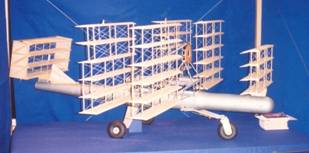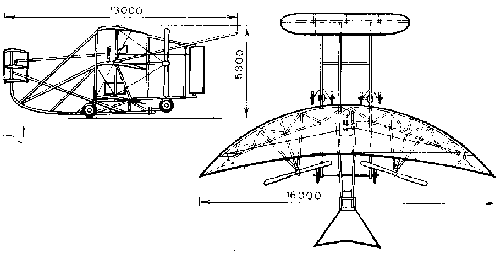Copy of Breguet’s
Pre-1914 Aircraft Challenge™ amended by 

Breguet’s Pre-1914 Aircraft Challenge™ related forum discussions and further details concerning these aerial machines can be found athttp://www.theaerodrome.com/forum/pioneer-aviation/. & History of Airplanes Photos and summaries of historical aircraft & wright-brothers.org & podniebni.zafriko.pl Challenge enumeration and submitted images of aircraft 1914-1918 JANE'S ALL THE WORLD'S AIRCRAFT 1913*****
retour-back Les tout-premiers, aviateurs, performances, records..., revues - The first airmen, performance, record ..., journal
| index Enter Search
Keywords advanced |
01-50 51-100 101-150 151-200 200-250 251-300 301-350 351-400 401-450 451-500 501-550 |
|
Pioneer pilot, Eugene Ely,
paves the way for the present day aircraft carrier
during a flight from the deck of the USS Birmingham,
November 14, 1910. source
Eugene Ely and the Birth of Naval Aviation—January 18, 1911 After receiving an engineering degree in 1904 from Iowa State University, Ely began a career in the fledging automobile industry as a salesman, mechanic, and racing driver. He taught himself to fly in 1910 and never looked back. He had natural skills as an aviator and quickly became a well-known pilot with the Curtiss Exhibition Team that toured all around the county. In the fall of 1910, the Navy identified Captain Washington I. Chambers “to observe everything that will be of use in the study of aviation and its influence upon the problems of naval warfare.” Chambers quickly realized the most important first step to prove that the airplane could operate at sea was to show that landings and take-offs from ships were possible. Chambers attended one of the first major flying meetings, being held at Belmont Park, NY, in October 1910. He met Glenn Curtiss and Eugene Ely at the competition and made a proposition. If he would supply the ship, would they make the attempt to land on board? Ely was excited at the prospect and agreed. On November 14, 1910,
the light cruiser USS Birmingham was readied at
Norfolk, Va., with a wooden platform erected on the
bow, approximately 80 feet long. Ely’s Curtiss
Pusher aircraft (similar to the Curtiss D-III
Headless Pusher on display at the National Mall
Building), equipped with floats under the wings, was
hoisted aboard and the ship moved off shore.
Ely succeeded in making the first take-off from a
ship, barely. The Curtiss rolled off the edge
of the platform, settled, and briefly skipped off
the water, damaging the propeller. Ely managed
to stay airborne and landed 2 ½ miles away on the
nearest land, called Willoughby Spit.
MORE Eugene Burton Ely MORE by The National Air and Space Museum MORE Eugene Ely Invented Naval Aviation, Exactly 100 Years Ago In San Francisco |
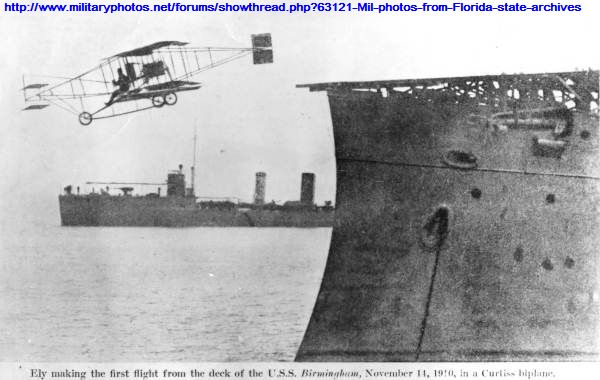   |
|
401
Howard Huntington Multiplane. Massive multi-wing aeroplane designed and built by Howard Huntington sometime during 1912/1913. The photo shows Huntington in front of his house in Hollis, Queens, on January 22, 1914, while in June of 1914 he constructed a single wing variant of his multiplane – the Huntington “Clam”. |
 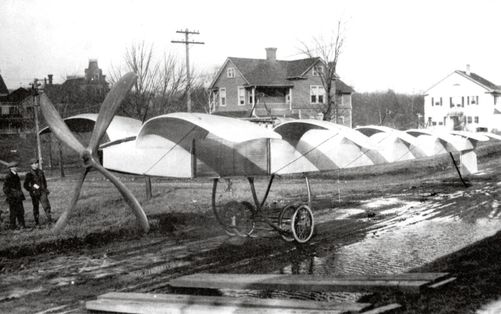 |
| 402
Clément-Bayard (Clément Bayard d’Edmond Audermars)
Monoplane No.1 of 1909.
Alternately know as monoplan C.A.M. (Clerget-Archdeacon-Marquézy). In March 1908 Pierre Clerget, employed by Gustave-Adolphe Clément-Bayard at the time, received an order from Ernest Archdeacon to design a monoplane. It was to be financed by Archdeacon and constructed by the firm of Clément-Bayard. On November 4, 1909, during a trial of the C.A.M. monoplane, fitted with a Clerget motor of 50 hp, the pilot, René Marquézy, after a quick start, suddenly rose to a height of 15 meters whereupon Marquézy cut the ignition and the aircraft returned to earth abruptly, breaking the propeller and distorting the wheels. René Marquézy, oft mentioned as being a lighter-than-air aeronaut, later acquired a Brevet of the Aeroclub de France (#238) on October 4, 1910. |
  La "Demoiselle" Clément Bayard d’Edmond Audermars. |
| 403 Hübner Eindecker of 1912. Tentatively identified as his second monoplane (E II). |
 |
| 404
Lamprecht-Gerstel Eindecker of 1909.
Built by the fitter Eugen Lamprecht and engine mechanic Heinrich Gerstel in Pforzheim. Lamprecht was the initiator of the project with Gerstel to install the engine. When funds ran out, the machine was exhibited at the guest house “Schwarzer Adler”, where it is told that the engine was occasionally started inside the ball room. Afterwards the monoplane was tested at the Exerzierplatz Forchheim, with only minor success. |
 |
| 405 Aviatik
Schul-Doppeldecker of 1912.
Of a type usually powered by 50-70 hp Argus engines, this particular machine was the first Aviatik biplane that received a 100 hp engine. In November 1912 aviator Arthur Faller planned to perform a promotion flight from Habsheim to the “Feldberg”, the highest mountain in the Black Forest, but while waiting for suitable weather conditions he undertook several record-breaking multiple-passenger flights. One such flight took place on January 30, 1913 at Flugplatz Habsheim carrying three passengers, lasting 2 hours and 3 minutes, breaking the standing world-record of 1 hour and 35 minutes set on January 25, 1912 by Dipl.-Ing. Grulich on a Harlan Eindecker, yet others with 3, 4, 5 and 6 passengers followed or predated that event. Cartes postale Doppeldecker |
 |
|
406
De Groof Machine Volant of 1874. In 1864, a Belgian shoemaker named Vincent de Groof designed an apparatus which was a sort of cross between beating wings and a parachute. His plan was to cut loose with it from a balloon, and to glide down in a predetermined direction by manoeuvring the supporting surfaces. He endeavoured to make a practical experiment, both in Paris and in Brussels, but it was only in 1874 that he succeeded in doing so in London. The apparatus consisted of two wings, each 24 feet long, moved by the arms and the weight of the operator, and a 20 foot long tail which could be adjusted using one’s feet. De Groof first went up on June 29, 1874, from Cremorne Gardens, London, attached to the balloon of Mr. Simmons. He came down safely, and claimed to have cut loose at a height of 1,000 feet. Subsequently however, it was stated by others that in fact he had not, on this occasion, cut loose at all, but had descended still attached to the balloon. In any event, he went up again on July 5 following, with the same balloon, and on this occasion he really did cut loose. The result was disastrous. In his descent, as soon as pressure gathered under the moving wings, they were seen to collapse together overhead into a vertical position, bringing De Groof down like a stone and killing him on the spot. |
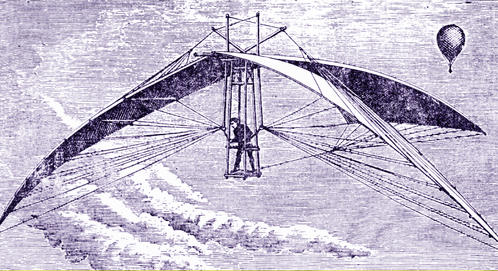 |
|
407
López Aeroplano “Jalisco” of 1909. Designed, patented, built and flown in 1909 by Mexican aviation pioneer José Guadalupe Mejía López. During its first test on the plains of the Rosary in the city of Guadalajara, the aeroplane was pulled with a rope by an automobile and rose 4 meters before it collided with a cactus, although suffering only minor damage. López subsequently received a German-made engine of 35 hp and flew the machine a distance of 800 meters at a height of 2.5 meters, thus becoming the first Mexican to built and fly his own aircraft. Mexican Aviation History Mejia Lopez, GuadalupeBeside Gomez Salvador Moya, built in 1910 a model airplane they called Jalisco, making a flight of 800 m, 2.5 m high, on the plains of the Rosary. They could improve the air for lack of money to buy a motor. He rejected the offer of the Aviation Center of New York to buy the patent and received a research grant in exchange for U.S. naturalization. |
 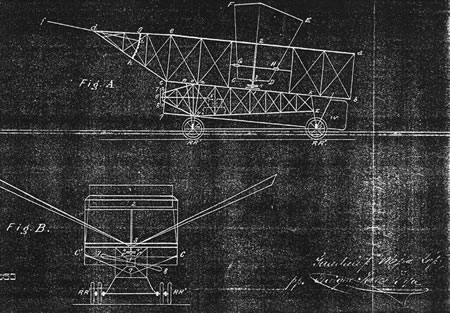 |
| 408 Cayley “Governable Parachute”. Sir George Cayley Bt. (1773 - 1857) Sir George Cayley http://www.centennialofflight.gov Sir George Cayley, born in 1773, is sometimes called the 'Father of Aviation'. A pioneer in his field, he is credited with the first major breakthrough in heavier-than-air flight. |
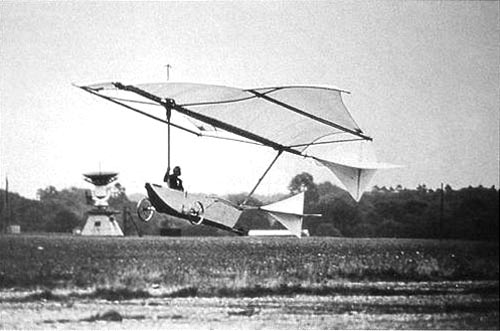 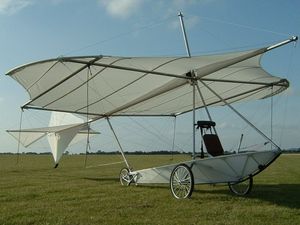 |
| 409 Nau Monoplane of 1910. Monoplane of Robert Nau, a French sculptor. Nau constructed an earlier monoplane in 1909. Port Aviation, (Orly Airport) (Pau) the first one airport on the world, October, 1st 1909, For the "Grande quinzaine de Paris", registration will be closed. The Comite inform that he became 34 aviators registration at 2 pm. Names are following : 1 Léon Delagrange, monoplane Blériot 2 Capitaine Ferber, biplane Voisin 3 André Duval, biplane Voisin 4 Gaudart, biplane Voisin 5 Guillaume Busson, biplane W.L.D. 6 Léon Delagrange, biplane Voisin 7 Léon Delagrange, monoplane Blériot 8 Henry Fournier, biplane Voisin 9 A. Gomés da Silva, biplane Gomés da Silva 10 Robert Nau, monoplane R.Nau 11 Voisin, biplane Voisin 12 Voisin, biplane Voisin 13 Voisin, biplane Voisin 14 De Baeder, biplane 15 Pauwels, biplane 16 A. Bonnet-Labranche, monoplane A.B.L. 17 Guillaume Busson, monoplane W.L.D. 18 Hornstein, biplane Hornstein 19 Comte de Lambert, biplane Wright 20 Jean Gobron, biplane Voisin 21 J.C. Koechlin, monoplane Koechlin 22 René C. de Nobat, monoplane Koechlin 23 Jacquelin, monoplane 24 Louis Breguet, double monoplane Breguet 25 Barkers, biplane Aviator 26 Paulhan, biplane 27 Marquezy, monoplane 28 Maurice Clément, biplane Clément 29 Henry Rougier, biplane Voisin 30 Saulnier, monoplane 31 Hubert Latham, monoplane Antoinette 32 Gratze (Anglais), monoplane Gratze 33 Sanchez-Besa (Chilien), biplane Voisin 34 Sanchez-Besa (Chilien), biplane Voisin As we can see, the "Grande Quinzaine de Paris" seems to be a great success |
 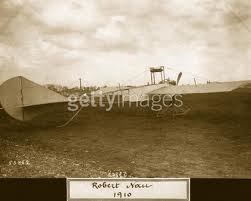 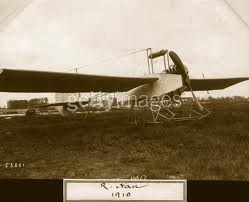 |
|
410
Senge Eindecker of 1910. Monoplane built by Paul Senge at Karlsruhe, Germany, weighing 280 kg, of 24.7 sq. meter wing area and powered by an unnamed 25-30 hp three-cylinder engine. Paul Senge (* 15 April 1891 in Hagenau/Alsace † 8. September 1913 bei Elsen, Grevenbroich) |
 |
|
411 MORE.
Richard Vogt (19 December 1894 - January 1979) was a
German engineer and aircraft designer. He is well
known as a designer of unique warplanes, including
an asymmetrically-shaped reconnaissance aircraft and
a nuclear-powered bomber,[1] during and after World
War II. I |
 |
| 412 Pons Velocípedo Aéreo of 1893. MORE. The first attempt to create the planes in Cuba dates back to 1893, when the leader of Cuban independence Jose Marti Patriot was approached Arturo Comas Pons , Cuban agronomist and journalist, to create a flying machine "to make it applicable to uses of war ", steel and aluminum. |
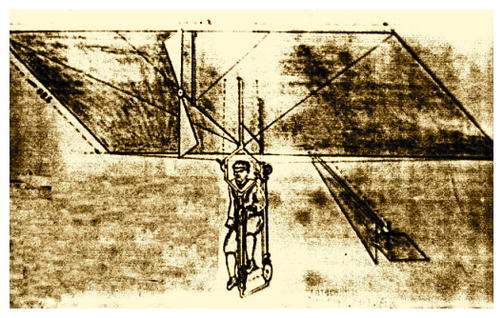 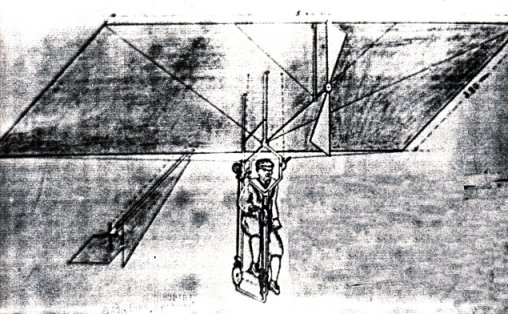 |
| 413 Parker Monoplane of 1910. The Spokane (Washington) Spokesman-Review of August 28, 1910 reported Fred Parker’s monoplane’s first flight in Minnesota occurring a day earlier. Fred was 22-years old at the time. The monoplane was built in a workshop in Hamline, a St. Paul suburb, and weighed 130 pounds. It is stated in Popular Mechanics (1909) that Fred Parker had previously made several dirigible flights for Roy Knabenshue and Captain Baldwin. |
 |
| 414 Walsh Monoplane of 1910. In its original configuration (with nose wheel); the modern looking monoplane devised by Charles Francis Walsh, who had founded the San Diego Aeroplane Manufacturing Company the previous year. The machine, with its massive wing, would probably have flown but was severely handicapped by its underpowered Cameron automobile engine of only 29 hp. |
 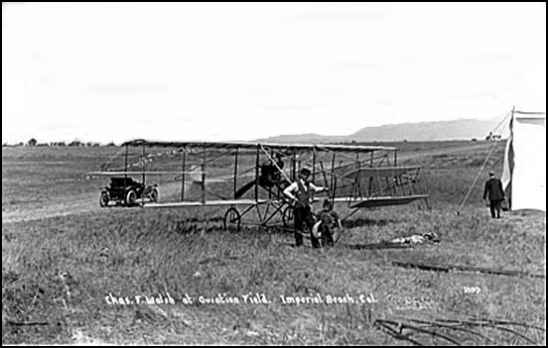  |
| 415 Schreck “Diapason I” Monoplane of 1910. Louis Schreck’s first Diapason flying machine – first version. The Diapason (French for tuning-fork of which it resembled), was monoplane in a form where the wing was swept back in a wide curve. The photo clearly shows a hefty radiator at the front of the small fuselage, from which may be concluded that one is looking at the 50 hp water-cooled Chenu-powered version. This engine was placed directly in front driving the pusher propeller at the back of the short central nacelle via a long shaft. In this version the entire nacelle is uncovered. |
 |
| 416 Eich Canard Monoplane of 1910. Pierre Eich (1867-1951) was born in Ghent into a carnival family of German origin. Highly interested in everything related to mechanics, Eich, like a lot of craftsmen mechanics, was also attracted by the adventure of aviation. In 1909 he built a monoplane, a canard type with wings equipped with ailerons. The aircraft was fitted with a French Antoinette motor of 24 hp to which Eich has a propeller of his design attached. Ground tests were conducted at the plain of Saint-Denis-Westrem at Ghent and the first attempted flight took place on June 13, 1910. The aeroplane, piloted by one Albert Ville, the mechanic who had developed the Antoinette engine, left the ground to a height of several meters, then fell heavily. The aircraft sustained minor damage, the pilot remained unhurt. Retrying June 16, he met with the same result. Finally, on June 23, Ville managed to make several flights of 70 meters at a height of two to three meters. On August 9, Pierre Eich himself was in control, but feeling that the apparatus did not exhibit sufficiently stable behaviour, decided to end his experiments. Along with the young son of the inventor, a modified aircraft would reappear June 20, 1911, on the Farman plain at Ghent. There would be made a unique and last flight. |
 |
| 417 Von Hagan Aeroplane of 1911. Built by German immigrant Alexander von Hagan in Seattle, Washington, the machine had two sets of silk wings, an aluminium framework, two motors and three propellers. It weighed 600 pounds without the operator. One propeller was in the front, the second three-quarters back, and the third at the rear. One 40 hp motor ran the two front propellers and a smaller one of 35 hp powered the rear. Von Hagan was born in 1859 and served in the German army for 14 years. |
|
| 418 Capone
Aérogyroplane of 1905.
Federico Capone’s machine was called l’Aérogyroplane because of the way it was powered. A small motorcycle engine of 4.5 hp drove double pairs of swinging blades symmetrically disposed at the end of wings. The blades worked like rotors in the initial stage of flight and then their position could be changed from horizontal to vertical. The latter was to give horizontal action to the machine. Built by Ceccarelli in Naples, testing was not very successful, as the machine was partially wrecked by a gale on April 30, 1905. The repaired machine was later sent off from a high launching position and managed to fly a certain distance. |
 |
| 419 Santos-Dumont No.19 type “Demoiselle”. |
 |
|
420 |
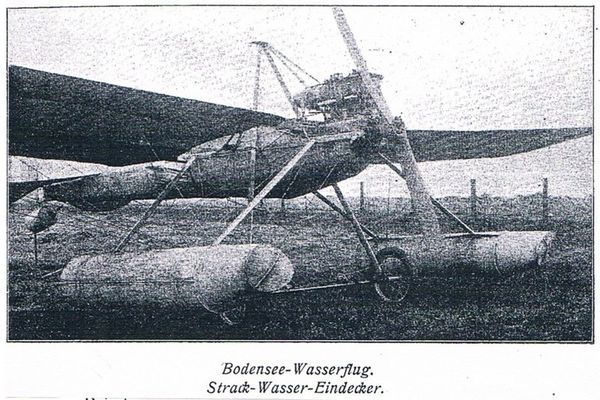 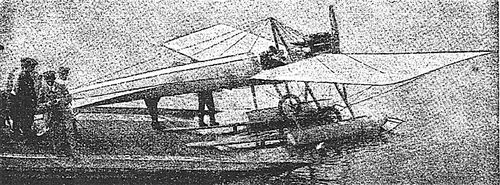 |
| 421 Santos-Dumont
No.12 of 1906.
Bamboo framework hélicoptère designed and built during 1905/06 at Neuilly St. James. The apparatus was abandoned soon after mechanical tests revealed inherent flaws in the transmission of power to the contra-rotating rotors. |
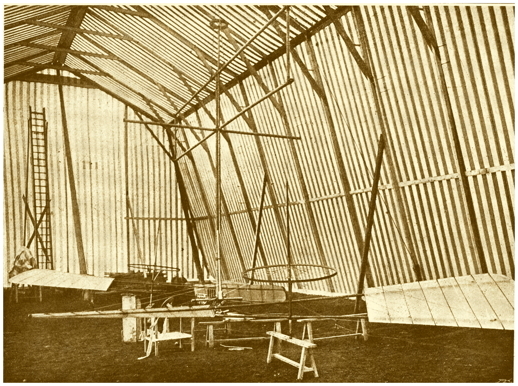 |
| 422 Neumann
“Dreiflächler” Tandem Monoplane of 1910.
Paul Neumann built the parts at the Neptun shipyard at Rummelsburg and constructed the machine at Johannisthal. The apparatus was modified and tested until 1911, but never left the ground. Though a tandem monoplane, the term “Dreiflächler” was likely derived from the front elevator being seen as a third wing. |
 |
| 423 Wright Doppeldecker of 1911. German
Flugmaschine Wright-Gesellschaft (Johannisthal) Wright
biplane designed by Deutsche Wright pilot Robert
Thelen. It had only a single propeller, directly
attached to the drive shaft of its 50 hp NAG engine.
Thelen used at least one of this type with the Ad
Astra Fluggesellschaft, a flight school and exhibition
company that Thelen formed with Rudolf Kiepert, also a
Wright pilot.
|
 |
| 424 Gatling
Aeroplane of 1873.
Replica of the machine designed and built in North Carolina by James Henry Gatling, the brother of Richard Jordan Gatling, the inventor of the infamous machine gun. The aeroplane, also called the “Turkey Buzzard”, is the first known man-powered aircraft built and flown in America. On a brisk Sunday afternoon in the Fall of 1873, Gatling, sitting in the cockpit of his invention, with hands and arms furiously turning the cranks of his fan blowers, reportedly glided a little over 100 feet from a platform constructed approximately 12 feet above the ground. |
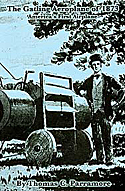 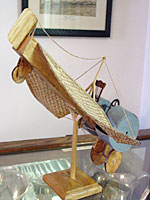 |
| 425 Mohawk Aerial Navigation Company Glider. Most likely the firm’s third and final glider built by Charles Proteus Steinmetz – the “Wizard of Schenectady” – and others in 1894. Steinmetz is not well known today but he accomplished a great deal in his lifetime considering he had dwarfism, was hunchback, and had hip dysplasia. While working for General Electric at Schenectady, N.Y., Steinmetz organized a band of fellow flying machine enthusiasts into the Mohawk Aerial Navigation Company, and over the summer of 1894 built and tested a man-carrying kite and two true gliders. None were particularly successful. [*] |
  |
| 426 Willing Eindecker Nr.3 of 1912. Karl
Willing’s third monoplane and first Gotha aeroplane.
Willing had already built two monoplanes, when in
1912, lacking money for further work, asked for help
from the Gothaer Waggonfabrik (Thüringen). This third
monoplane was built in the old Gothaer Waggonfabrik
shops and was powered by a 70 hp RAW engine. The
machine was offered to the army but refused before it
was ever flown, and apparently it never was.
|
 |
| 427 Suvelack “Apparat” of 1910. |
 |
| 428 Sclaves Biplane of 1910. French
machine, apparently constructed of metal pipes and an
abundance of wire bracing.
Sclaves Did it fly? This tractor biplane powered by an acetylene motor was tested at Amberieu in 1910 by a man from Lyon named Sclaves. At least one photo shows a 50 hp Prini-Berthaud engine. The rectangular wings were braced entirely by one pair of outboard struts on each side and wires from double kingposts on top. The heavy forward box structure seemed made of pipes; the rear fuselage was uncovered. The 2 wheels were castering. PLUS Their machines machines==> http://flyingmachines.ru/Site2/Arts/Art4743.htm |
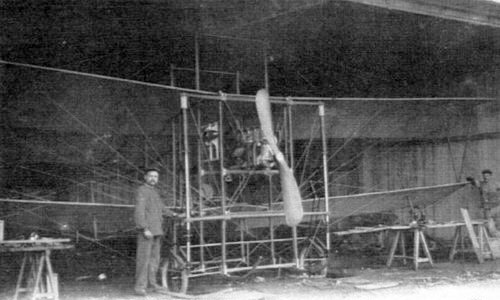 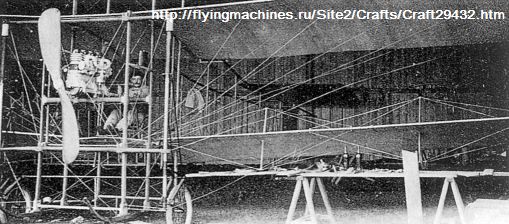 |
| 429 Asteria MB (Monoplano Biposto) of 1913. Societa italiana aeroplani – founded in Milan in 1912 by attorney Enrico Luzzatto after the close of the Helios firm – made use of the work of engineer Flaminio Piana Canova, who left the workshops of Somma Lombardo’s Battaglione Aviatori, and briefly assumed the role of technical director for all of Asteria where soon he built an almost identical monoplane to the Sia Italia, called Asteria MB, and also presented at the 3rd International Exhibition of Aerial Locomotion of Turin (May 17-24, 1913). |
 |
| 430 Nesterov-Sokolov Glider. Russian hang glider built circa 1911 by (later to become well-known aviator) Nesterov, working with Sokolov. PLUS Piotr Nikolaevich Nesterov |
 |
 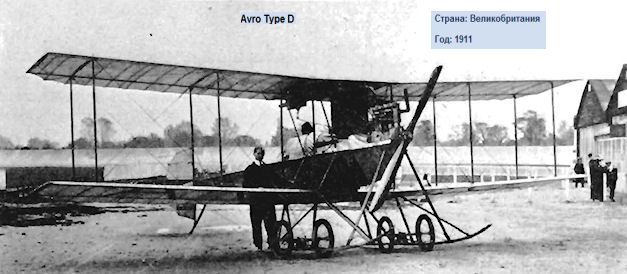 |
|
| 432 Lunardi Balloon of 1784. First gas balloon to make
an ascension on the British Isles – September 15,
1784. Later exhibited at the London Pantheon by the
flamboyant Italian aeronaut Vincenzo (Vincent)
Lunardi, secretary to Prince Caramanico, the
Neopolitan ambassador to the Court of St. James.
PLUS http://www.fiddlersgreen.net/models/aircraft/Balloon-Lunardi.html |
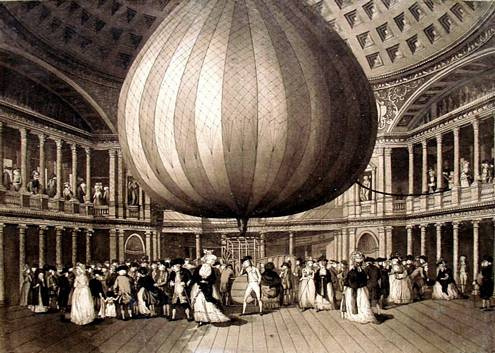 Exhibition of Lunardi's balloon at the Pantheon  |
| 433 Anders Airship «Киев» of
1911.
Russian non-rigid dirigible “Kiev” «Киев» was designed and constructed by Fedor Ferdinandovich Anders [Федор Фердинандович АНДЕРС]. First flight is given as August 6, 1911 (probably old style date) in the city of Kiev. It is claimed that “Kiev” was the first Russian dirigible built with private funds that carried passengers commercially. |
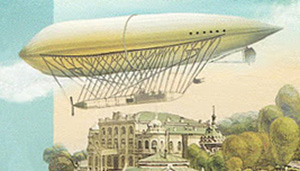 |
| 434 Keil “Ballo-plane” of 1905.
An electrically-propelled dirigible balloon combined with lifting aeroplanes. Its envelope constructed by Carl E. Myers at his balloon farm at Frankfort, N.Y. for Mr. W. M. Keil of Tuxedo Park, N.Y., this Keil-Myers HTA/LTA airship was presented the week of January 13, 1906 at the 69th Regiment Armoury Auto Show in Manhattan, of which the aviation exhibition element was put on by the Aero Club of America. Nothing is known of its existence afterwards. |
 |
| 435 Tatin-Mallet Monoplane of 1907. Funded and piloted by Comte Henry de la Vaulx at St. Cyr. |
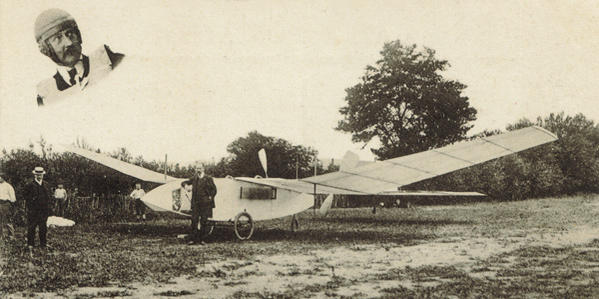 |
| 436 Langley-Smithers Monoplane.
Built in 1908-1909, assembled and tested at Knockholt Cricket ground in Kent. It took off, but crashed on the first attempt and appears not to have been rebuilt. The fuselage was an open parallel girder, with curved top and bottom members meeting at both front and rear ends. fitted with a tail plane and front elevator, there was considerable dihedral to the wings, which were braced to a tall pylon of four struts, and could be warped. The unidentified type of motor drove twin tractor propellers, apparently by shafts and bevel gearing. MORE |
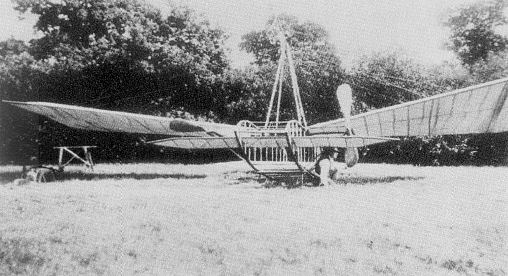 Langley-Smithers monoplane of 1908-1909 at Knockholt, Kent. |
| 437 Unidentified Hot-air
Balloon.
Exhibited by an unidentified aerialist at Fargo, North Dakota – from an empty lot on the 300 block of Broadway next to the Fargo Lime & Fuel Co. – circa 1899. Possibly associated with the “Fargo Fire Festival”, an annual event celebrating Fargo’s rebuilding after a devastating fire which took place in June 1893. |
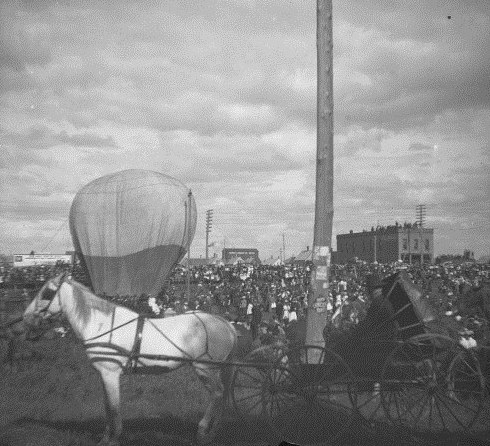 |
|
438
Degen Flugmachine of
1807.
Ornithopter built by Jakob Degen – a Swiss watchmaker living in Vienna – first drafted and published in 1807. Degen made his earliest somewhat successful flights by using a counterweight to assist his lift, indoors at the Winter Riding School of the Spanish Riding School in Vienna on April 18, 1808. That same year, on November 13 and 15, he gave two outdoor performances with his Flying machine at the Wiener Prater using a small hydrogen-filled balloon to aid his ascensions. Later on over the years, three times Degen staged his performance in Paris and is also known to have visited Berlin with his apparatus. These attempts generally resulted in complete failure accompanied with personal injury. |
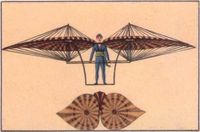  Flugmaschine.
Erfunden von Jacob Degen in Wien [1807] Flugmaschine.
Erfunden von Jacob Degen in Wien [1807] |
| 439 AEA (Aerial Experimental Association) Aerodrome No.3 of 1908. Third design of the Aerial
Experiment Association of Alexander Graham Bell,
identified more commonly as the “June Bug” or, because
of the use of his engine – the Curtiss June Bug. This
machine became famous because of its winning the
Scientific American Trophy when piloted a distance of
5,080 feet by Glenn H. Curtiss on the 4th of July,
1908. It can be identified by the peculiar
construction of its biplane wing, where the ends were
described as “balancing rudders” – today termed
ailerons.

Smithsonian Institution ==>http://www.siris.si.edu/ |
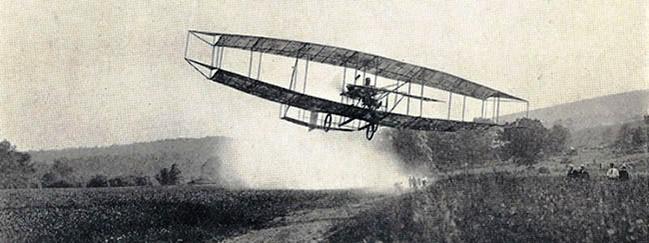  source source
|
|
440
Hipssich Flieger (reconstructed) of 1910. The “rekonstruierte Hipssichflieger” – sometimes identified as the Hipssich Drachenflieger II, a development of the I – photographed at the flying field at Wiener Neustadt around the beginning of October 1910. At right, wearing a bowler, is Karl Hipssich. Hippsich was a German inventor living in Vienna with an interest in aviation who invented and patented an automatically stable Flying machine, or “Drachenflieger” rather. Construction started at the end of 1908 where the actual building was done by the Viennese firm of Karl Köhler. On the left is the pilot of the machine Erich Köhler who had no pilots license at the time. He acquired German No. 347 on January 10, 1913 at Breslau when flying a Rumpler Taube. |
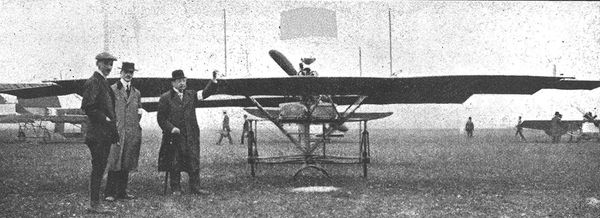  See theaerodrome.com/forum/ |
| 441 Assman Balloon “Miss
Sophia”.
Gas balloon piloted by the intrepid St. Louis, Missouri, aeronaut William Assman – already world-renowned for his aerial exploits in America – in flights made during 1911. [*] 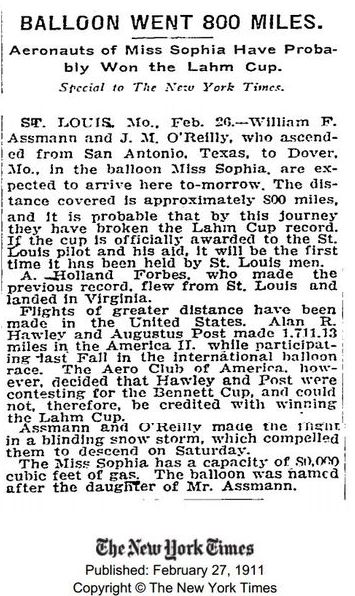 |
 |
|
442
Reynolds Man Angel No.1 of 1905. The earliest of six neutral-buoyancy man-powered dirigibles designed and built by Alva L. Reynolds of Los Angeles, California. This lighter-than-air ornithopter was fitted with a triangular section framework “boat” suspended from its 3,000 cu. ft. gas bag, in which – using a large pair of oars set into oarlocks on blocks – the seated “rower” was remarkably successful in propelling and manoeuvring the craft over far distances. This rare photo was probably taken during its trials performed above Fiesta Park, Los Angeles, where the aerial rowboat was first flown by Herbert Burke on July 27, 1905. 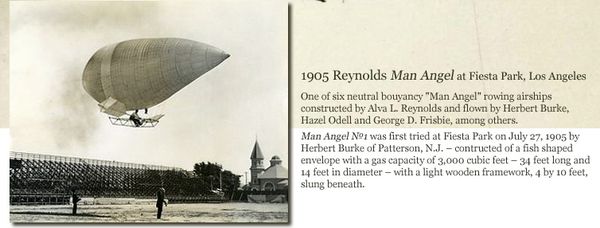
|
  |
|
443
1901 TRIMARAN
AIRPLANE [ Early - 1782 ] [ 1783 - 1849 ] [ 1850 - 1876 ] [ 1877 - 1892 ] [ 1893 - 1903 ] [ 1904 - 1960 ] |
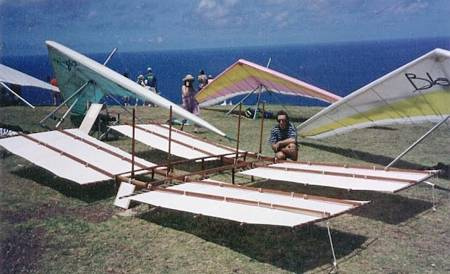  |
|
444 |
 |
| 445 Queen Aeroplane Company
Twin Monoplane of 1911.
Taken at Mineola airfield, the Queen Speed Monoplane / Double Gnome Monoplane; fitted with two Gnôme rotary engines of 50 hp – the two bladed propellers driven in opposite direction to prevent torque. Its design influenced by the Blériot monoplane (Queen built Blériot XI monoplanes under license at the time), the twin engine construction was thought to be safer, that in the case of malfunction of one, flight could continue using the other. The machine was financed by the banker Willis McCormick, who was president of the New York Aeronautical Society. Built in Fort George, New York in 1911, its first flight was made by Frank Stone on July 10, 1911. Unfortunately the machine was unstable during the climb, turned and crashed, injuring the fearless Stone. The machine was ruined, never to fly again. |
 |
| 446 Tsapenko-Farcot Ornithopter of 1908. Orthoptère of Spiridon Tsapenko [Спиридон Цапенко] and Joseph Michel Ambroise Farcot. The two photos taken by Branger on July 21, 1908 show a small scale version built as a pre-study for a full-size higher powered machine. This trial version had a 12 hp Farcot engine of 20 kg in weight, bringing the total weight of the machine to 150 kg. [*] |
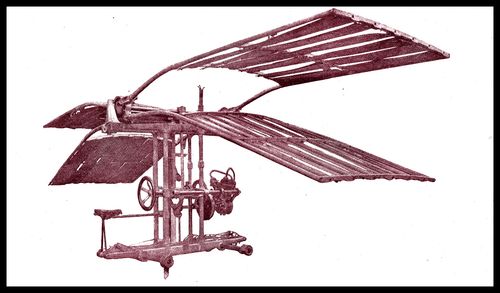 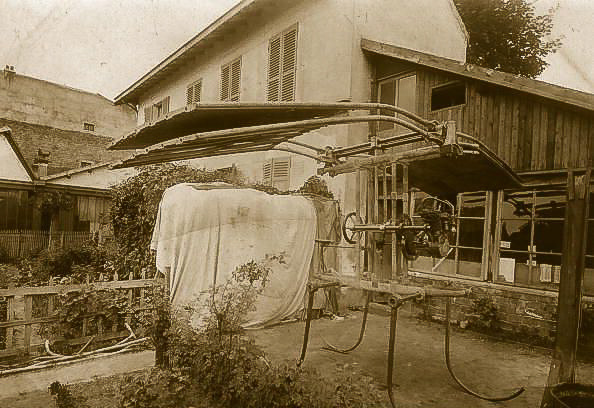 |
|
447
Butusov Soaring Machine “Albatross” of 1896. Shown at Dune Park, Indiana, on its launching trestle, the “Albatross” was devised and built by William Paul Butusov, a Russian sailor, who by the mid-1890s was living in the American mid-west. Its construction and testing was funded by Octave Chanute, the French-American civil engineer who did much to advance aviation at the end of the 19th century. It was one of a number of gliders that Chanute and others had tested on the banks of Lake Michigan, during the summer of 1896. Of the flying machines there, Butusov’s was undoubtedly the largest and most ambitious, but unfortunately it was also the least successful. More William Paul Butusov |
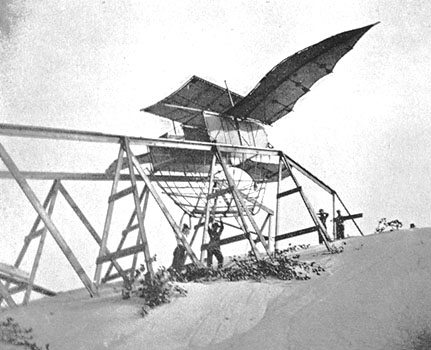  |
|
448
Albatros DE of 1913. Albatros doppeleindecker type, quite likely a training machine, given the skids and the apparent comfort provided to the instructor in back. Its 6-cylinder engine was either a Daimler Mercedes D.I or D.II of 100 or 120 hp. Very similar to the Albatros Uhu Schuldoppeldecker (training biplane) dating from 1913, described by Lange as having many of the same qualities. [*]  MORE http://freercplans.com/img-albatros-1913-3796.htm |
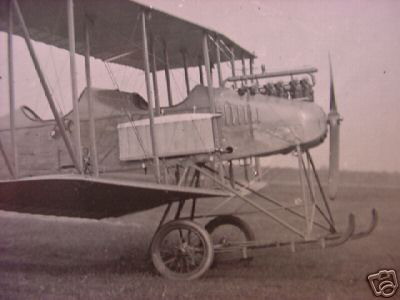 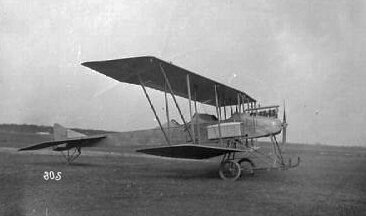 |
|
449
MORE
De Dion-Bouton Multiplane of 1909. The first of two unsuccessful aeroplanes designed and built by Établissement de Dion-Bouton, the famous car and motor company. Remotely resembled a Wright Flyer, with twin rudders at the rear, a single small tailplane, and a triplane elevator in front, but instead of wings, each side had four wing-segments set at 30 degrees dihedral. Four propellers were to be employed, driven by a 100 hp engine. Displayed incomplete at the Première Exposition internationale de la locomotion aérienne at the Grand Palais in Paris during September 25 - October 17, 1909, construction and/or testing was likely halted afterwards as nothing more was heard of this flying machine of Jules-Albert de Dion and Georges Bouton.  MORE: The second de Dion-Bouton (Year: 1911) design was a biplane with a single front elevator, built at the Espinosa Avionnerie (SACAA). 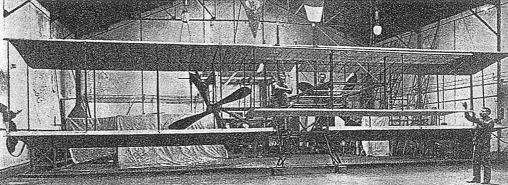 |
 |
| 450 “Le Victorins” Dirigible
Airship Model.
Scale model of a never-realized airship named “Le Victorins”, attributed in 1909 by the photo agency Meurisse (Paris) to the nearly-forgotten, builder-extraordinaire of French aerostats, Henri Rogé. Possibly conceived and constructed during the years between the 1896 “torpilleur aérien” draft project of Louis Godard, and that of Rogé’s death at the age of 75 in 1900. |
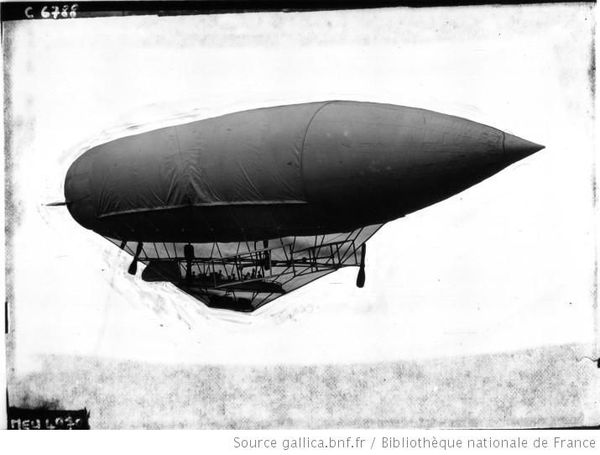 |
| 451 Ponche et Pimard “Tubavion”
Monoplane.
The all-metal Tubavion of Charles Ponche & Maurice Primard – the first 100% metal aeroplane built in France – which went through a number of variations from 1911 onward, well into WWI. This photograph represents the 1912 version flown by Marcel Goffin at Reims or Amiens. The undercarriage and metal framework around the nacelle containing the engine and pilot are distinctive. Development of the Tubavion halted when Ponche was killed in an aircraft accident on February 10, 1916.  History of tubavion History of tubavion |
  |
| 452 Crawhez Triplane. The aeroplane of Baron Jean de Crawhez on display at the Eighth Annual Belgian Motor Show, held in Brussels from the 16th through to the 26th of January 1909. In the background of M. Crawhez’s aeroplane is the ornithopter of M. de la Hault, both Belgian machines. [*]  Baron Jean de Crawhez
Baron Jean de Crawhez |
  |




